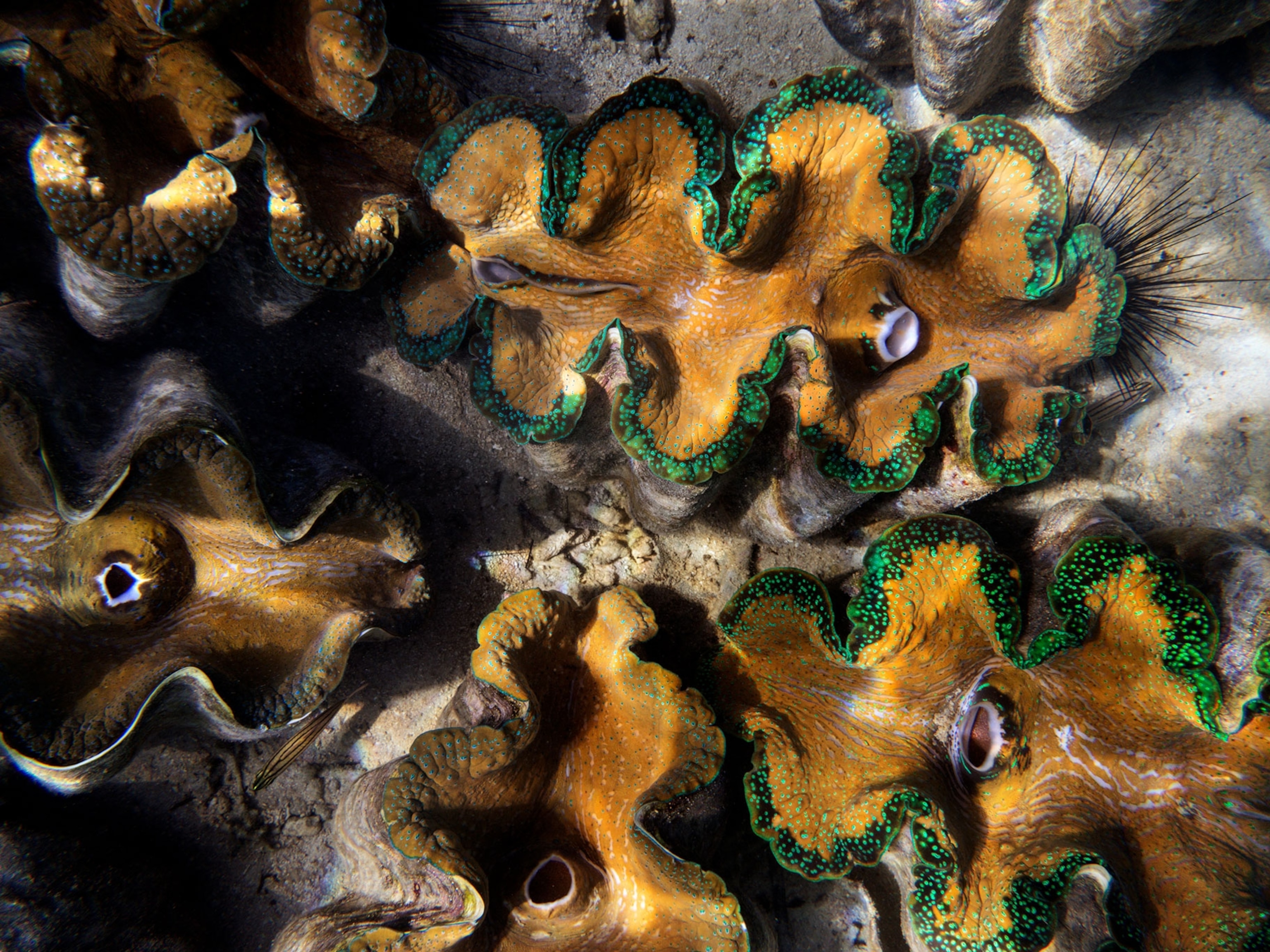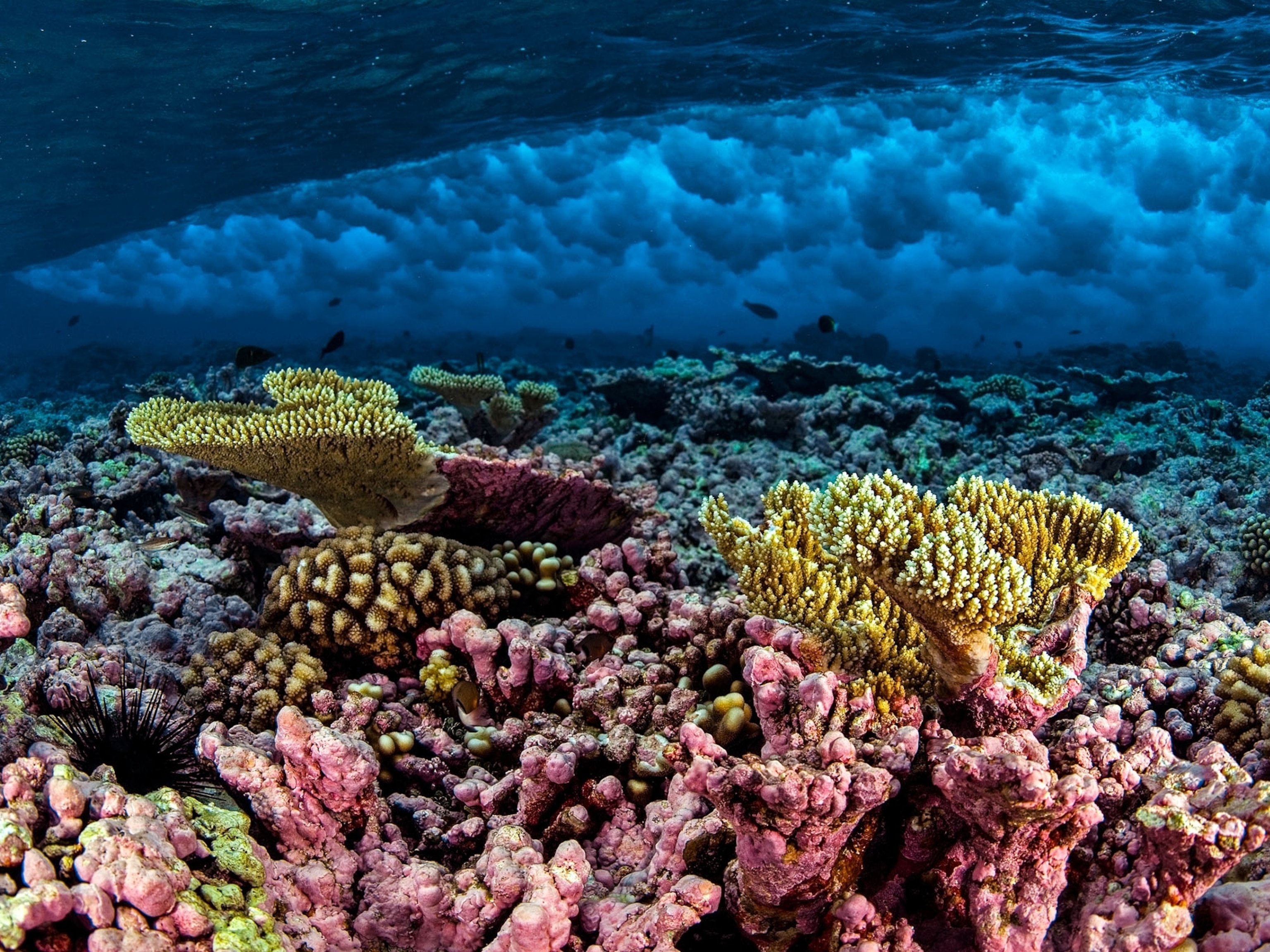
Crackdown Could Help End Giant Clam Poaching in Critical Reefs
New regulations in southern China aim to protect coral reefs by putting an end to the thriving trade in giant clam carvings and other handicrafts.
Earlier this year, National Geographic reported on the environmental destruction taking place in the South China Sea while politicians and diplomats argue over which country controls the region. The fishery, one of the largest in the world, is on the brink of collapse, and hundreds of acres of coral reef, some of the most biodiverse in the world, have been buried under artificial islands or dug up in the quest for giant clams.
Giant clam poaching is the main cause of reef destruction in the South China Sea. Some 40 square miles of coral reefs, or about 10 percent, have been killed by Chinese fishermen seeking the giant bivalves. A booming trade in Tanmen, a port town in the southern Chinese province of Hainan, has made the fishing, carving, and selling of giant clam shells, carvings, and jewelry a lucrative business.
Now, in a stated attempt to protect the marine environment, Hainan Province has banned the processing and trade of giant clams and corals, another marine product that’s seen an increase in illegal trade. Calling the sea around the province, which encompasses several contested island chains in the South China Sea, a “treasure house,” the regulations amend the Coral Reef Protection Act of Hainan Province to include giant clam species.

“Poaching and illegal transportation of these animals, including their dead body and products, are strictly prohibited, including online transaction and mailing,” a translation of the regulations reads, noting that the Fisheries Management Bureau will be in charge of protecting giant clams.
The trade began in the 1990s when Tanmen fishermen had exhausted coastal waters and needed to supplement their income. A fishing subsidy helped them travel farther into the South China Sea, where they found giant clam shells buried in the reefs. A cottage industry in Tanmen sprang up, producing giant clam handicrafts for wealthy tourists vacationing at the resorts of Hainan.
Now, according to one news report, there are about 150 processing workshops and 900 shops in Tanmen. Sales hit $430 million last year, Cao Yeke, the director of Hainan’s giant clam association, told ECNS, the English-language website of the state-owned China News Service.

Giant clams, which can grow to nearly four feet across, play an important role in the sea’s ecosystem by filtering pollutants in the water. Furthermore, the destruction required to remove them from the reefs kills off large swaths of coral, potentially exacerbating the already critical overfishing problem in the region because coral beds provide habitat for marine life.
Those who have studied the trade aren’t confident that these new regulations will change much. “While the new rule is very comprehensive, I am not sure how well or effectively it will be implemented,” said Zhang Hongzhou, a research fellow at Nanyang Technological University in Singapore, in an email. He said selling giant clams has always been illegal under other laws, but enforcement was a gray area. “My concern is that as long as there is huge demand for giant clam products, actions taken on the supply side will only achieve limited effects.”
Greg Poling at the Washington, D.C.-based think tank, the Center for Strategic and International Studies, however, notes that the market has seen a shift in the last year. "By many accounts, [Chinese President Xi Jinping's] anti-corruption drive undermined demand for the expensive jewelry and statues carved from giant clam shell, which is what finally put a halt to the devastating clam-digging throughout the Spratly [Islands]" in the South China Sea.
Still, Zhang said the market looked strong when he visited Tanmen in December. “The workers of giant clam workshops were quite busy making new products. You still can see the piles and piles of raw giant clams behind the main street.”





